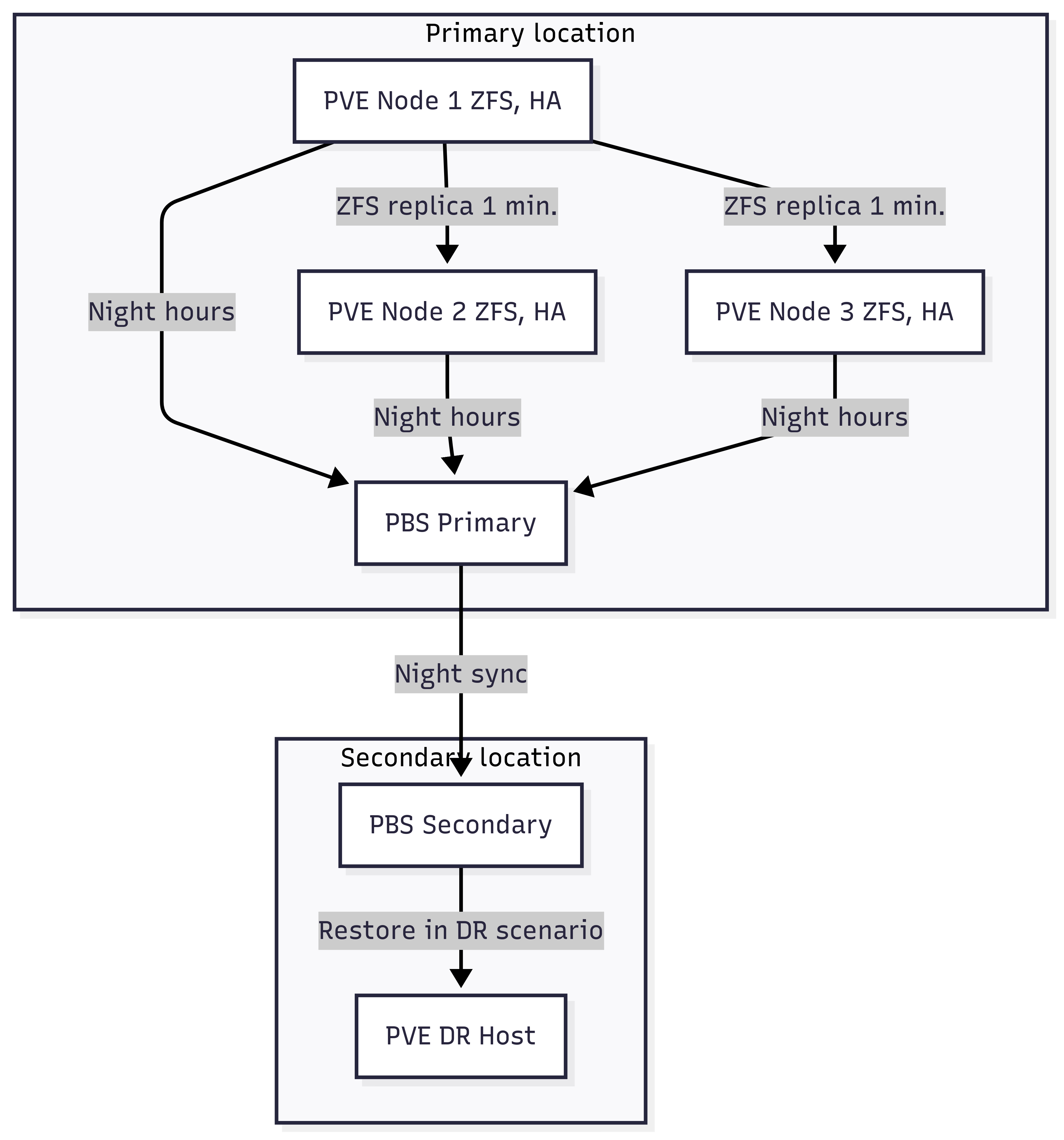Case Study:
Proxmox VE ZFS Cluster with Remote DR – Availability, Security, and Simplicity

Cost optimized solution with DR in secondary site
Solution Architecture
In the primary location, a 3-node Proxmox cluster runs with ZFS storage for virtual machines and containers. A local Proxmox Backup Server performs daily backups of all data. These backups are synchronized nightly to a remote site on a secondary PBS instance. In case of disaster, the remote PBS can restore virtual machines to a pre-prepared Proxmox server in the secondary location.
Key Components
3× PVE nodes (Proxmox VE 8.x), each with ZFS RAID-Z2
ZFS replication every minute from the primary node to the others (asymmetrical)
HA Cluster: automatic VM failover in case of node outage
Local PBS: deduplicated backups every evening
Remote PBS: nightly sync over low-bandwidth connection
Disaster recovery ready via remote PVE host
Infrastructure Diagram

Backup and Replication Strategy

Benefits
High availability via Proxmox cluster and minute-level ZFS replication
Quick VM recovery without data loss on local node failure
Fully automated backup with remote off-site copy
Disaster recovery strategy with ready-to-restore environment
Cost-effective – no need for shared storage or high-speed WAN links
Summary
This case study demonstrates the power of an open-source Proxmox + ZFS stack. Thanks to strategic replication and backup planning, we achieved high availability, rapid recovery, and disaster resilience—even with limited connectivity to the remote site.
